19 Fun Pieces of Computer History From the Museum of Interesting Things
19 Fun Pieces of PC History
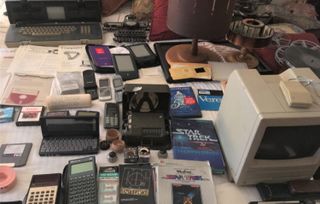
PCs have come a long way since the 1946 completion of ENIAC, or more recent mainstream PC originals like the Commodore 64. By today's standards, decades-old PCs seem bulky and are often coated in that classic shade of faded gray-beige that makes us grin.
But what is a computer anyway? In the most basic sense, a computer is something you can program to conduct specific operations. The first programming didn’t arrive with PCs--or even room-sized mainframes. It came much earlier, in surprising devices like musical instruments and automated weaving looms.
To find out more, we visited New York City’s Museum of Interesting Things to get our paws on as many pieces of PC history as we could. From self-playing instruments of the 1800s, to IBM’s first machine (and no, it’s not a punch card), to artifacts museum curator Denny Daniels views as the original Google, YouTube and PowerPoint. We encountered a delightful smattering of historical items that all contributed to the computer and PC market in their own way.
Buckle up. It’s time for a blast from the past.
Jacquard Loom
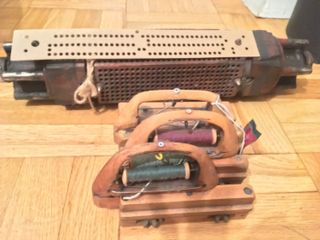
The jacquard loom was invented in 1804 and made textile manufacturing much easier through the magic of programming. It’s often viewed as the beginning of computing, since it was the first programmable machine.
Invented by France’s Joseph Marie Jacquard, these looms carried a piece of hardware (pictured) that would spin and read punch cards before telling the loom what to do. There you have it, the first punch cards, designed to make cheaper textiles.
Self-Playing Instruments

Who needs musical lessons when instruments can play themselves? While pop music has made lip-synching all but acceptable (we're looking at you, Britney Spears), self-playing instruments have long been faking gullibles out, since the early-to-mid 1900s to be more precise.
Stay on the Cutting Edge
Join the experts who read Tom's Hardware for the inside track on enthusiast PC tech news — and have for over 25 years. We'll send breaking news and in-depth reviews of CPUs, GPUs, AI, maker hardware and more straight to your inbox.
You've probably have seen player pianos, or self-playing pianos in old movies or at malls before. But did you know there were automated saxophones and harmonicas in the 1800s? These instruments were programmed to play music through an inserted paper roll that told them which notes to hit.
Just be careful who you perform for or else risk being dubbed a phony.
The First IBM
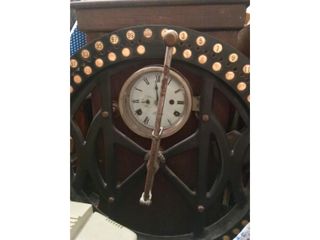
In 1911, the International Time Recording Company, Computing Scale Company and Tabulating Machine company all merged into the Computing-Tabulating-Recording Company. That conglomerate would later be re-branded as International Business Machines--aka IBM--in 1924.
The earliest of those three companies is the International Time Recording Company, which invented mechanical time recorders and was founded in 1888. So when you think about ‘the first IBM machines,’ it may be more accurate to think of time clocks like this, which assigned employees a number and allowed them to clock in and clock out with a loud chime.
Google and YouTube: 1800s Style
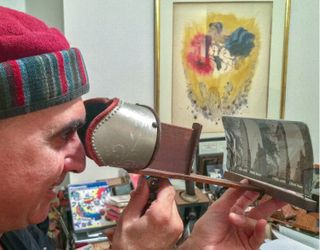
Museum of Interesting Things’ Daniels calls stereoscopes, also known as steropticons, as the Google and YouTube of the 1800s. Used up until the early 1900s, you could buy a pack of cards with a certain theme, ranging from kid's cartoons to teaching aids, medical devices and places around the world, for your stereoscope. The front of each card had a photo, while the back had text teaching you all about what you were viewing.
“In the 1800s, it was expensive to go to New York or France. Books were expensive. Libraries weren’t everywhere. So what did you do if you wanted to Google something? … You’d get these stereoscope slides and buy them in packs of 25. Learn about the Civil War, France, put in a slide, take out a slide, put in another slide, take out a slide--that’s your YouTube,” Daniels said.
The PowerPoint of the Past
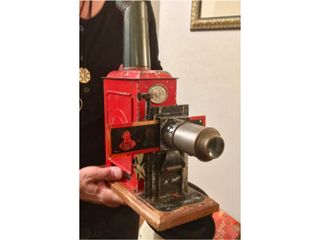
Who needs Microsoft PowerPoint to make a slideshow? Not the techies of yesteryear. Instead, the Magic Lantern played their slideshows, called Magic Lantern presentations. Even Thomas Edison had a catalogue of Magic Lantern presentations, Daniels told us.
Magic Lantern presentations were crafted on glass slides and came with a booklet featuring information for each slide. This is like PowerPoint templates on steroids. Presentations covered a wide gamut of categories, including different historical periods and even secret societies, and were available to rent or own. We saw one priced at a whopping $65 (likely in 1900s dollars).
Magic Lanterns were invented in the 1500s but took off in the early-to-mid 1800s. They first ran on oil lamps (pictured), but eventually they used light bulbs instead.
Credit: Lomita/Wikimedia Commons
Enigma: The Early Encryptor
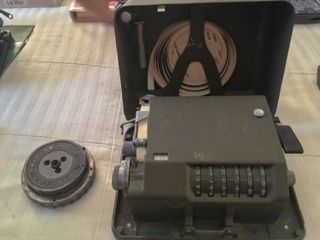
Anyone who keeps up with the latest security breach headlines--seemingly a full-time job these days--knows the importance of encryption. Encrypting data helps ensure privacy, secure computing and, in the case of the Enigma, engage in world warfare.
The Enigma is a cipher machine that was created by German inventor Arthur Scheribus toward the end of World War I. As a cipher machine, the Enigma encrypted messages sent by soldiers so the enemy couldn’t read them. Well-documented users include Nazi Germany.
The “First” Laptop
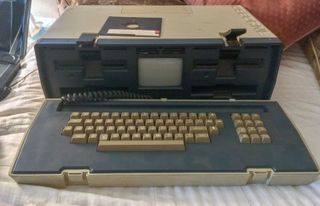
What, exactly, constitutes as the first laptop is hotly debated. But many give the Osborne 1 that title since it was the first to really take off.
Debuting in 1981 courtesy of the Osborne Computer Corporation, these portables used floppy disks as "hard drives." A vent on top managed heat, while a snap-up keyboard and handle led to its "luggable computer" nickname.
Despite the obvious bulkiness, an impressive 10,000 Osbourne 1 machines were sold per month in its first year. But in 1983, facing growing competition, the vendor filed for bankruptcy.
We wouldn’t be Tom’s Hardware without diving into the specs a bit here, right?.
Osborne 1 Specs
- CPU: 4MHz Z80
- Memory: 64KB, made of four rows of DRAM chips
- Display: 5-inches, CRT, 52 x 24 text
- Operating System: CP/M 2.2
- Ports: 1x parallel
- Drives: 2x 100K disk drives
- Connectivity: Optional modem
- Included Software: CBASIC2 (Digital Research, language compiler), MBASIC (Microsoft, game), Colossal Cave (game), Deadline (Infocom, game), dBase II and dBase II Tutor (Ashton-Tate, database), Nominal Ledger, Purchase Ledger, and Sales Ledger (PeachTree Software), SuperCalc (Sorcim, spreadsheet), WordStar (MicroPro, word processor)
- Price: $1,795 (roughly $4,800 today)
The First Smartphone
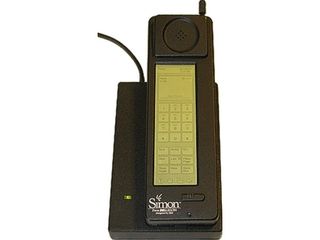
Most of us are familiar with the clunky cell phones made popular in ‘80s and ‘90s by the likes of Wall Street’s Gordon Gekko and Saved by the Bell’s Zach Morris. Heck, you may have even owned one yourself. However, it’s less likely you owned the first smartphone, the IBM Simon, as it only sold about 50,000 units.
First available in 1995, it sold for $1,100 (or $900, and eventually $600, if you signed a two-year deal with BellSouth). That’s also in line with today's premium smartphone pricing, and perhaps rightly so since this smartphone had several of the same capabilities of today’s smartphones. There were basic apps like Email, Calendar, Notepad, Sketch Pad and To-Do Lists. The Simon featured predictive text and even had a touch screen!
Credit: Bcos47/Wikimedia Commons
The Original Tech Community
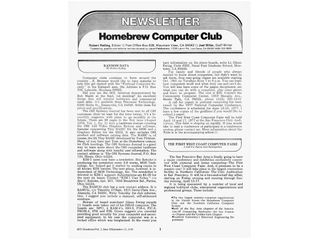
We love our community here at Tom’s Hardware, but from 1975 to 1986 there was another platform for PC enthusiasts to gather: the Homebrew Computer Club.
The Homebrew Computer Club may be the reason we have Apple and Microsoft today. Apple’s Steve Jobs and Steve Wozniak, as well as Microsoft’s Bill Gates and Paul Allen were all members. In fact, the former introduced the first Apple computer there.
Pretty big names for a tech community, sure, but were their discussions as lively as those on the Tom’s Hardware forums?
The Original DIY Robot
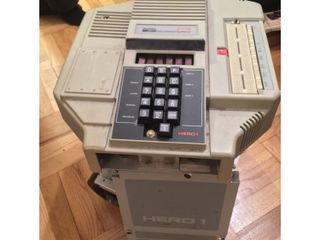
DIY robots are all the rage. Today's kids are fortunate to have a fun way to dive into STEM and coding with robot toy kits. And parents get to have some fun with their children too. But building your own robots is nothing new.
Heathkits allowed customers to build their own robots, TVs, radios, oscilloscopes and computers from 1947 until 1992. In fact, Steve Jobs was a big fan of the kits, and it just may be what gave him the confidence to build computers for the world.
“[Heathkits] gave one the sense that one could build the things that one saw around oneself in the universe. These things were not mysteries anymore. I mean, you looked at a television set, you would think that ‘I haven't built one of those but I could. There's one of those in the Heathkit catalogue, and I've built two other Heathkits, so I could build that,’” Jobs told the Computerworld Information Technology Awards Foundation in 1995.
This particular robo is the Hero 1. His arm fell off over time, but after some gentle surgery, he'll be capable of walking around and picking things up. When he was born in 1982, he cost $995 (about $2,600 today).
By the way, Heathkits are still around. After filing for bankruptcy in 2012, Heathkits came back in 2015 with an online shop.
Scharon Harding has a special affinity for gaming peripherals (especially monitors), laptops and virtual reality. Previously, she covered business technology, including hardware, software, cyber security, cloud and other IT happenings, at Channelnomics, with bylines at CRN UK.
-
dennphill Thanks for a trip down memory lane! Last time Tom’s went through a history of computers…I enjoyed that as well. NOT in the IT business, though I have been assembling my own PCs for many years now…AMDs through 2015 and Intel since. Just a simple occasional user. (I went from MS-DOS to Win95 (in the mid 95s) to WinXP to Win7, and am now still plugging along with Win8.1. A total Luddite when it comes to Win10, though I may have to cave with my next build!)Reply
- First computer exposure in the early 1960s was studying engineering at VPI and lugging around punch cards for the school’s IBM 360! I suspect my current Haswell–based i5-4440 with a 512GB SSD and a 2GB HDD sitting on my desk is probably at least as powerful!
- I had a good friend, when we were pilots flying for the Pentagon at Ft. Belvoir back in the early 1980s, who came home one day and showed me an Osborne he had just bought. I remember playing with it and seeing what we could get it to do.
Again, thanks Scharon! Good article. ? -
bit_user Reply
I came for "19 Fun Pieces of PC History". Hardly any of these had to do with PCs.21322445 said:From Victorian-era self-playing instruments to early IBM and Apple systems, we found several tech artifacts that contributed to the PC market in their own way.
Please fix the title. After the work you put into this, you don't want to setup your readers for disappointment. Also, some of these items might interest those wishing to remain blissfully ignorant of PC history. -
rogue17.mm yes it was a trip down memory lane but some of the objects or gadgets are not the first of its kind, i mean like it said that in 1993 the apple newton pda was the first portable computer but before that there was a palmtop that was first launched in 1989 or 1990 i thinkReply -
mortemas As I await the availability of nNidia's new gpus I have been thinking about how far we've come since my childhood when my first video game console was the Atari 2600 and a game like Pong was literally 2 lines (the paddles) and a dot (the ball). I remember using PovRay to make single ray traced images that took hours to complete on a home PC. Quite a few things on that list take me back to my younger years, as well as other items not mentioned. I remember our first modular handheld gaming system, Microvision, which flopped after 2 years on the market. Of course there were other electronic games before that, like football with the bubble display. I remember Epoch's portable space invaders clone with a vacuum display and loud, obnoxious sound effects that would tick off my family when I played it. My friend had a Vectrex, which was super cool at the time. Our family had an IBM Selectric. My first PC was a 10MHz 80286 (the IBM PS/2 50z), which had a 13" crt screen. My first modem was a Samsung running at 1200 baud, I think. That's 150 *bytes* of data per second! I grew up assembling Heathkit projects and I remember wanting the Hero bot so much! I still have a catalog like the one in this article, as well as the IM-2320 digital multimeter I assembled decades ago which I still use today. My PDA 18 years ago was a Handspring Visor Prizm. So, as I wait for the RTX 2080 ti I'm replaying an old game from 1981 on classicreload.com:Reply
https://classicreload.com/ultima.html
Now pardon me...I have to go slay a Balron -
mischon123 The IBM punch cards and the Holleriths were sold by IBM and made the Holocaust possible. Little known but important fact.Reply -
WyomingKnott How depressing. I just had to throw out a bunch of stuff that would have qualified, and I'm still in mourning.Reply -
Olle P The QWERTY-system wasn't so much to slow typists down as to put a physical distance between the bars for letters that are often written next to each other.Reply
Most Popular



